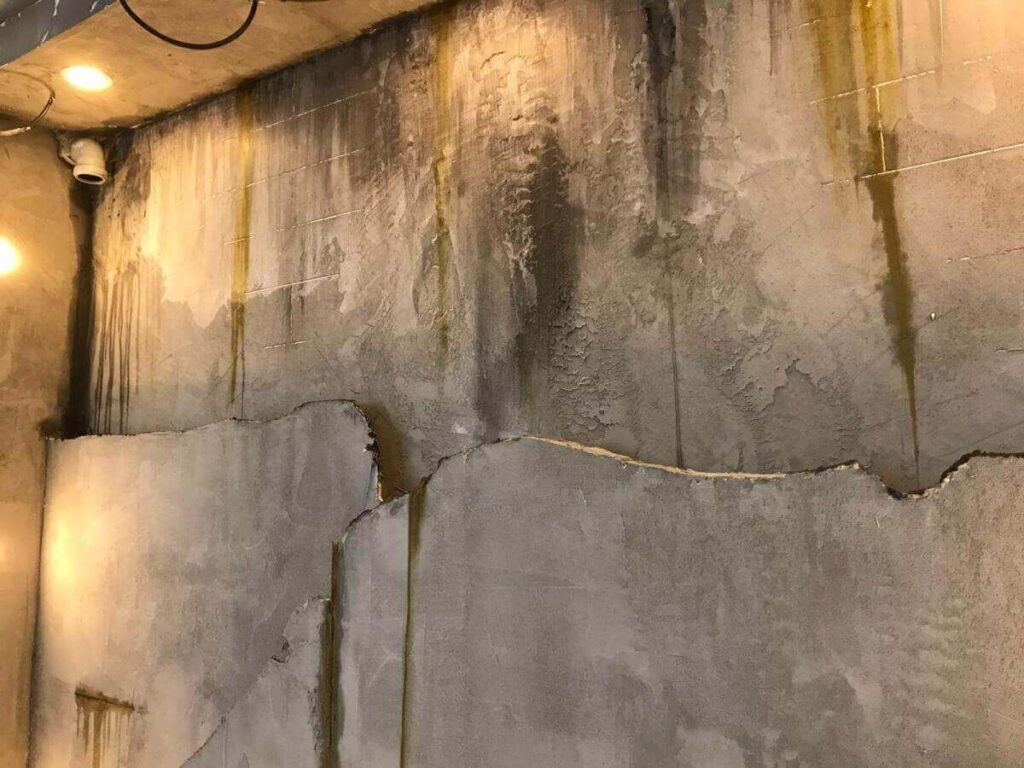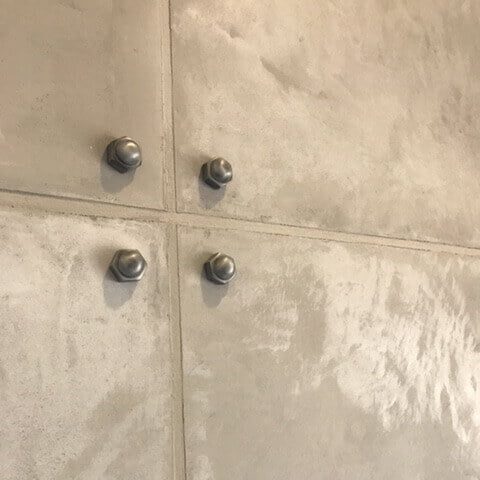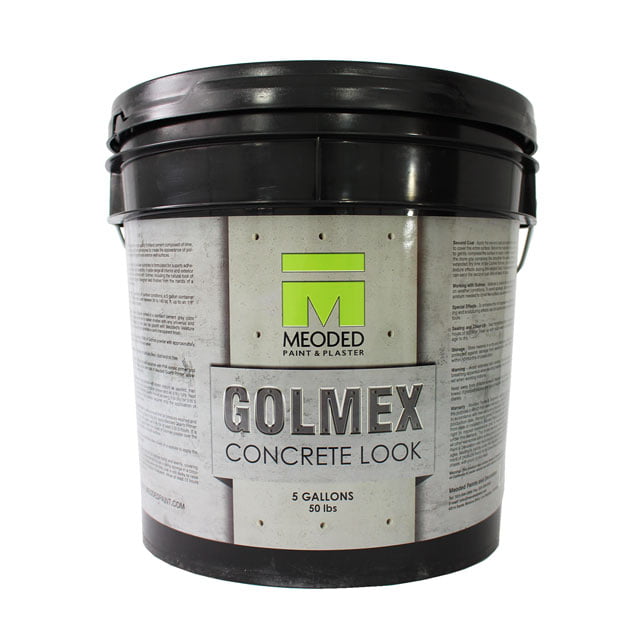Cement plaster and concrete plaster’s rich contribution to the beauty and protection of the surface of walls hardly needs arguing. It can cover the outside and inside of a building, forming a protective layer over stone, brick, and RCC walls and ceilings.
Additionally, cement wall plastering effectively levels the wall and ceiling surfaces and can also be used to create smooth, textured, or unique concrete finishes.
This article discusses cement/concrete plaster and the benefits of using it.
The Benefit of Cement Plaster
If you watch a few home improvement shows, you might be surprised to see that once the plaster is removed from some older homes, the defects in the brick and stonework may be so severe that the risk of collapse seems imminent.
Where these walls have somehow withstood the ravages of time and not fallen in a stiff breeze, plaster has undoubtedly played a role in increasing the strength of these walls and columns, preserving what little structural integrity there was, and improving the life of the structure.
Plastering gives a measure of protection from the elements, preventing water ingress, and provides some soundproofing and thermal insulation as well as a degree of fireproofing. (Some cement-based plasters are used as spray fireproofing products.)
It provides a durable, smooth, attractive decorative finish that hides unsound, sometimes porous materials, faulty workmanship, rough surfaces, and construction imperfections. Concealing uneven surfaces with plaster provides an even base for primer and paint.

Different Types of Cement Plaster
When mixed, mortar is applied to the wall surface. It comprises a mixture of building materials such as cement, lime, gypsum, sand, and water.
Cement plaster is classified according to its components, finishes, level of popularity, mixing proportions, and the number of layers – there are generally one to three coatings.
Plaster can be made with various types of cement, and the medium has become progressively harder over the last century as a result of new kiln firing methods. In addition, Portland Pozzolana Cement (PPC) has advantages over Ordinary Portland Cement (OPC), such as its durability.
Because PPC is finer, it has lower permeability. The structure should thus have a longer life than it might if OPC is used. It is more cohesive and can be pumped.
PPC has a higher resistance to chlorides, sulfates, alkalies, and chemicals than its counterpart. It is more environmentally friendly or sustainable as it saves on limestone and uses by-products from coal-fired thermal stations, making it more cost-effective. PPC’s setting time is longer, so finishes are better, and it is less likely than OPC to develop shrinkage cracks.

Adding Water to the Mix
Water suitable for drinking is the best for mortar. It should not contain chlorides or organic impurities such as silt, acids, alkalis, oils, and salts, because these can weaken the mortar.
The quantity of water necessary for plasterwork with 1:3 proportions is about 70 percent of the weight of cement but will change depending on factors such as:
- The condition of the fine aggregate;
- Humidity and temperature when plastering takes place;
- Whether the mix is richer or leaner than 1:3;
- How much lime is included in the mortar;
- Any admixtures used to improve the workability of the mix.
For normal home use, the quantity of water in plaster is about 15%-18% of the weight of the container of plaster.
Cement/Concrete Plaster Finishes
Concrete/cement plaster can be divided into the following finishes:
- Smooth cast – Made of cement and fine sand, the mortar is applied with a wooden float. It is this finish that is usually used for exterior walls. A steel float should not be used as this yields very smooth results, which are prone to cracking in the elements.
- Roughcast – This plaster comprises a mix of gravelly sand/coarse aggregate, cement, and sand. A trowel is used to “throw” a large quantity onto the surface, which is leveled with a wooden float.
- Sand-faced – This plaster consists of a cement-sand mix applied over masonry to create a waterproofing layer. While the second coating is still damp, a sponge acts as a sand grain to smooth the surface, making it uniform. This helps to reduce the appearance of cracks.
- Scrapped – This is when the final coat is left to harden for a few hours, and then when it has set, a toothed blade or similar tool is dragged over the surface to create a coarse finish.
- Textured – Tools are required to create different finishes in plaster.

How many Coats to Use:
Single-coat plaster is referred to as a “dash/scratch coat.” It is applied in up to 10mm thickness. This is then scratched with a comb to give it a rough texture. This is only ever used indoors.
Double or “brown coat” is composed of the same mix as the first coat, also to a depth of about 10mm. It has a rough texture.
Three-coat or finish plaster is applied over the first two coats. If the surface plastered is particularly uneven. Three coats of plaster are applied for a smooth finish and the sand used gives a smoother finish than the brown coat.
Curing of the Plaster
Curing aids in reducing surface cracking and should be done 24 hours after the plastering. The surface must be kept wet for a full week. In addition, there should be a 7-day wait between the first and second layers of plaster.
The first/ scratch coat should be evenly dampened before the next coat is applied. If the weather is cool, a longer period of curing is necessary. In hot/warm, less humid, or windy conditions, the curing process must begin when the plaster shows evidence of setting.
To carry successive plaster coats, the surface of the first coat must have been allowed to set but should not have dried out.
Golmex Concrete/Cement Plaster: The Unrivaled Choice
At Meoded, we manufacture Golmex plaster, a perfect cement alternative to cast concrete. Golmex’s mix of top-quality Portland cement, lime, graded silica sand, and admixtures creates the highly sought-after contemporary industrial appearance of cool polished concrete, which can be used on interior and exterior wall surfaces. Golmex is a finish coat cement plaster allowing you to create these finishes without all the mess and can be applied directly onto drywall for interior applications.
The product has been specifically formulated to meet the demand from designers for an attractive finish with exceptional workability, adhesion, and longevity. Different acid stain techniques add antiquity and interest. Textures can also be created.
Since the eco-friendly zero VOC mix comes ready-packaged, you just add water. You only have to follow the instructions or watch the video for a step-by-step guide. It’s child’s play, and it’s sure that you’ll be thrilled with the results.
Explore Meoded’s fantastic range of home renovation products today.
